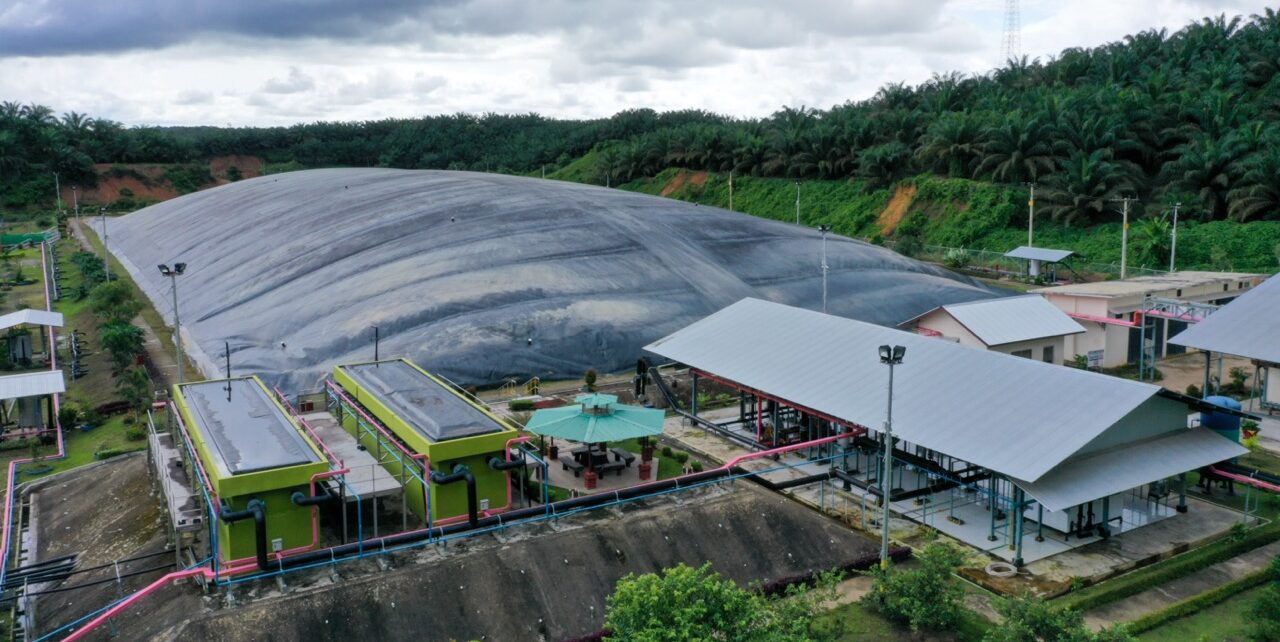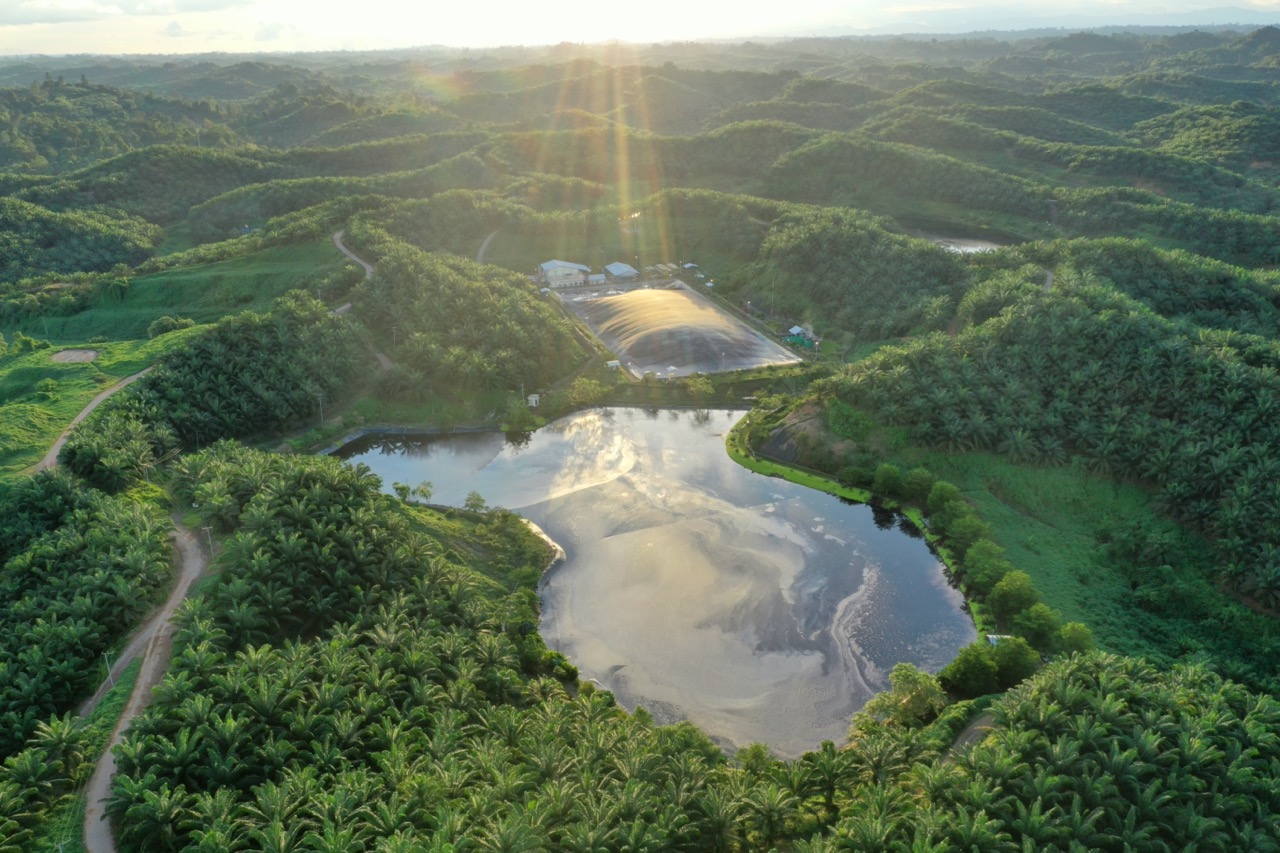We are dedicated to minimizing our net greenhouse gas (GHG) emissions. Since 2017, we have set a long-standing commitment to reduce our upstream emissions by 55% against the 2006 baseline by 2025. Since then, we have publicly disclosed our upstream emissions and the Group’s scopes 1 and 2 emissions through our annual Sustainability Report and Carbon Disclosure Project (CDP).
In 2022, we engaged a technical consultant to map and reinforce the entire Group’s carbon footprint (Scope 1, 2, and 3) following the global standard of GHG Protocol. This comprehensive analysis covers emissions from upstream, midstream, downstream, and supporting facilities. Strengthening our internal calculations is crucial as we set Group-level baselines, identify key GHG hotspots, and develop reduction targets aligned with the Science-Based Targets Initiative (SBTi).
That same year, Musim Mas and 13 other agriculture commodity companies set out to develop a shared roadmap for reducing emissions from land-use change: the Agriculture Sector Roadmap to 1.5°C. The Tropical Forest Alliance facilitated the roadmap development, hosted by the World Economic Forum (WEF) and supported by the World Business Council for Sustainable Development (WBSCD). It represents a sector-wide plan for addressing forest loss in supply chains and accelerating collaboration with others to achieve that goal. It commits the companies to implement time-bound plans and report publicly on their progress towards the targets annually.

Scope 1 and 2 Emissions
Scope 1 emissions encompass direct emissions from sources within a company’s control (e.g., combustion in owned or controlled boilers and furnaces). In the palm oil industry, these can arise from various sources, such as plantation soil management, combustion of biomass for generating steam and electricity in processing facilities, fuel combustion for vehicles and equipment across plantations, mills, and refineries, land-use change from the company’s palm oil operations, and transportation of harvested palm fruits from lorries or ships owned by the company.
As for Scope 2, these are indirect emissions resulting from purchased energy, such as the generation of purchased electricity, heat, or steam consumed by a company. In our operations, scope 2 emissions arise from using grid electricity and steam for processing facilities or other operations in the palm oil industry.
The emissions from direct sources controlled by Musim Mas (Scope 1) and indirect emissions from purchased electricity and steam used to operate our facilities (Scope 2) contributed to approximately 9% of the Group’s baseline year emissions.
Scope 3 Emissions
Most GHG emissions in many sectors fall under Scope 3 emissions, which are indirect emissions from a company’s value chain stemming from upstream and downstream activities (e.g., emissions from suppliers, contractors, and their goods and services). These are beyond a company’s operational control. While these are sources where we would have lesser influence in emission management, we recognize that accounting for GHG emissions across our supply chain is a crucial step.
We model and account for our Scope 3 emissions against the GHG Protocol guidelines. Based on the preliminary results of our baseline year, a majority of Group emissions come from Scope 3 emissions, contributing to more than 90% of the total emissions.
A Focus on Upstream Emissions
In addition to employing the GHG Protocol at our global operations, we calculate emissions across our Roundtable on Sustainable Palm Oil (RSPO)-certified upstream operations using the RSPO PalmGHG v4 calculator. The calculation covers all of our 15 RSPO-certified integrated mills.
The primary emissions are from land-use change combining land conversion and peat oxidation. The installation of methane capture facilities at our palm oil mills reduces our GHG emissions by hundreds of thousands of tons of carbon dioxide equivalent (tCO2e) every year. Combining other emissions sources and offset with sequestration (from palm trees and conservation areas) as well as from the sale of electricity generated from our methane capture facilities and palm kernel shells (PKS), our net emissions intensity was about 2.7 MT CO2e/MT CPO in 2022.
Life Cycle Assessment (LCA)
In addition to accounting for our Group emissions, we also account for our carbon footprint of product (emissions intensity of product). Our products form ingredients for our customers’ product manufacturing, making our emissions part of their Scope 3 emissions. Consequently, as part of global collective decarbonization efforts, customer requests for a product carbon footprint (PCF) have been growing.
In 2019, Musim Mas began overseeing a Life Cycle Assessment (LCA) for our upstream products. In 2022, we piloted a project to conduct an LCA for selected downstream products. The evaluation follows the ISO 14040 and ISO 14044 standards with a cradle-to-gate approach. The LCA covers potential environmental impacts such as global warming potential (including PCF), eutrophication, acidification, and water consumption.
In parallel to the ongoing pilot project, Musim Mas is processing customers’ PCF requests in stages. The LCA study is a rigorous exercise relating to the scope and product life cycle process; hence, Musim Mas will continue to improve our LCA models, conforming to the highest standards.
Group-level emission reduction roadmap
Our 2022 and 2023 groundwork are instrumental to understanding focus areas to develop ambitious reduction targets. In 2024, Musim Mas will develop reduction targets aligned with the SBTi. These targets align with the Forest, Land, and Agriculture Guidance (FLAG) and SBTi frameworks and contribute towards the 27th Conference of the Parties to the United Nations Framework Convention on Climate Change (COP27) and Agriculture Sector Roadmap commitments. In January 2024, our commitment to setting near-term and net-zero emissions reduction targets in line with the 1.5 °C pathway has been formally endorsed by the SBTi.
Upstream GHG emission reduction
Our upstream GHG emission intensity has seen a rapid decline over the years, which is due to the various best management practices Musim Mas has undertaken since 2006, such as no new planting on peat since 1 January 2008, the installation of methane capture, optimizing chemicals use through Integrated Pest Management (IPM) and precision agriculture.
Although a significant proportion of the potential reduction has already been realized, we will continue to lower our GHG emission intensity by improving our water management in peat areas and increasing our FFB yield and oil extraction rate.
We aim to reduce our emission intensity by 55% compared to the 2006 baseline in 2025. In 2022, our upstream GHG emissions intensity was 2.77 MT CO2e per tonne of CPO produced (MT CO2e/MT CPO). This figure is 53.4% lower than our 2006 baseline and puts us well on target to reach our 2025 target.
